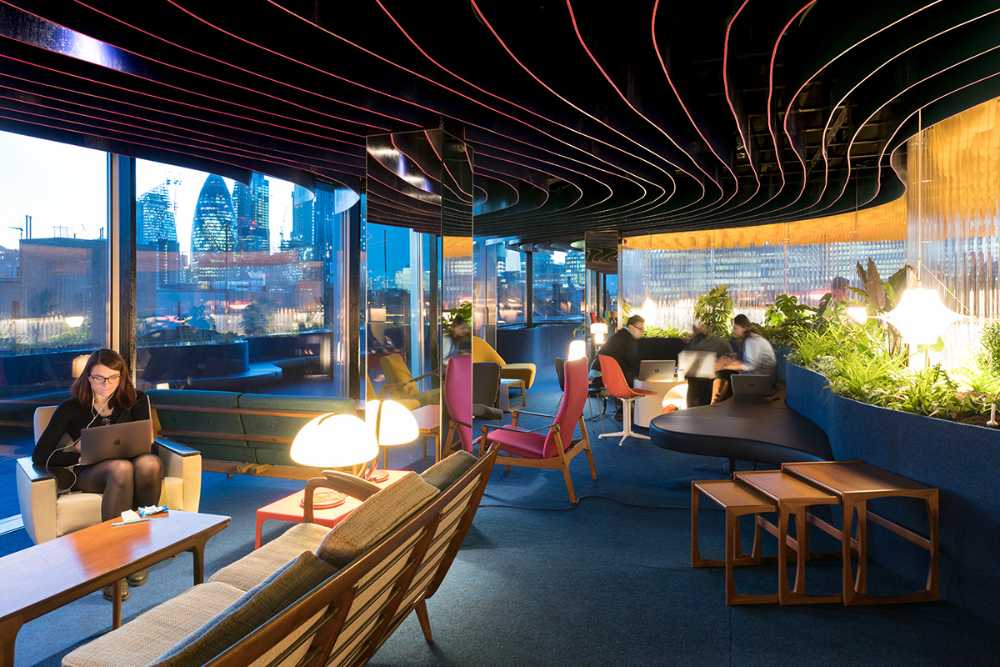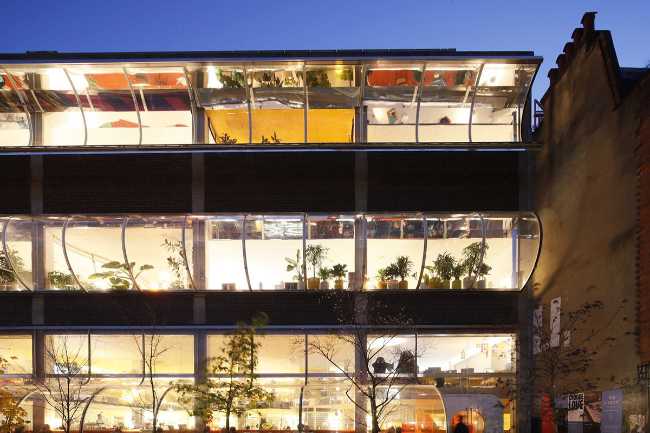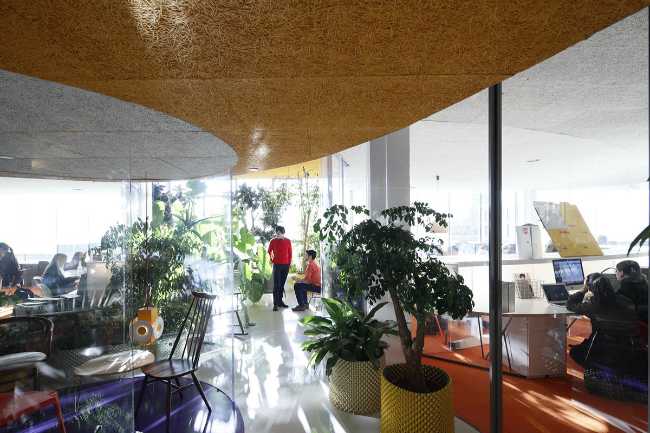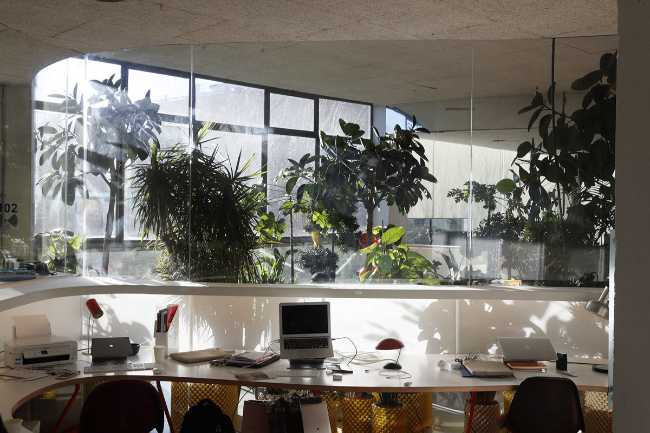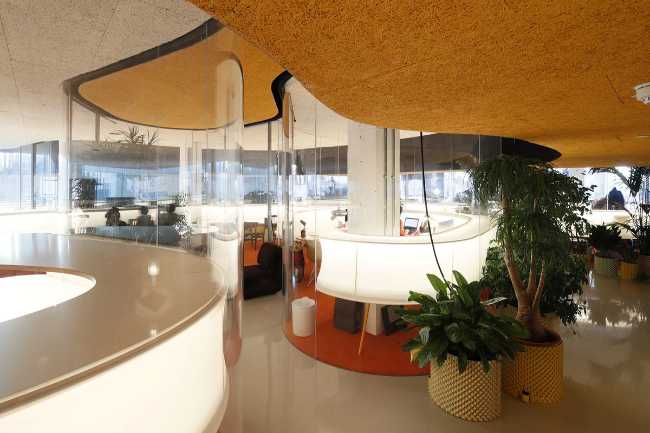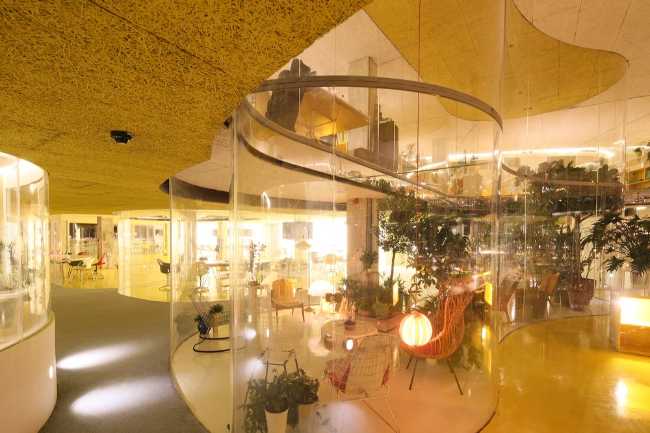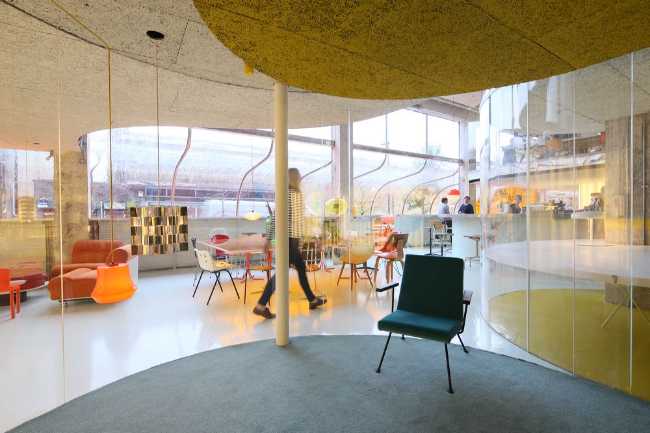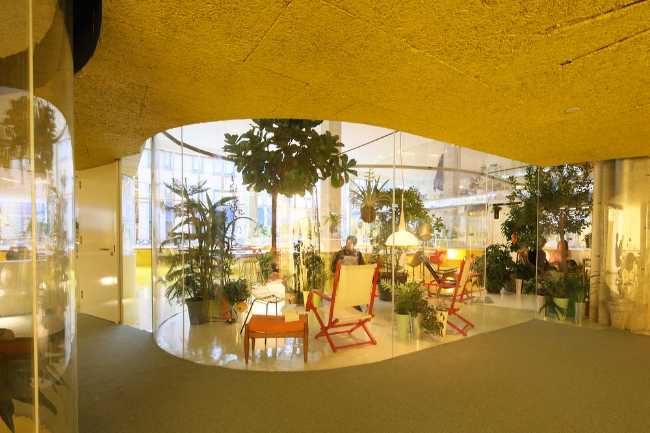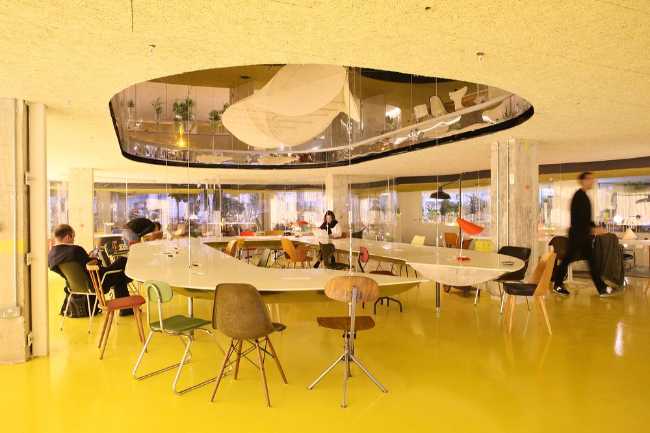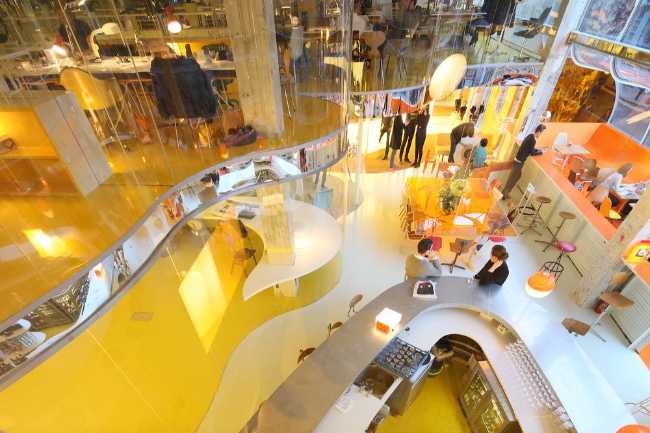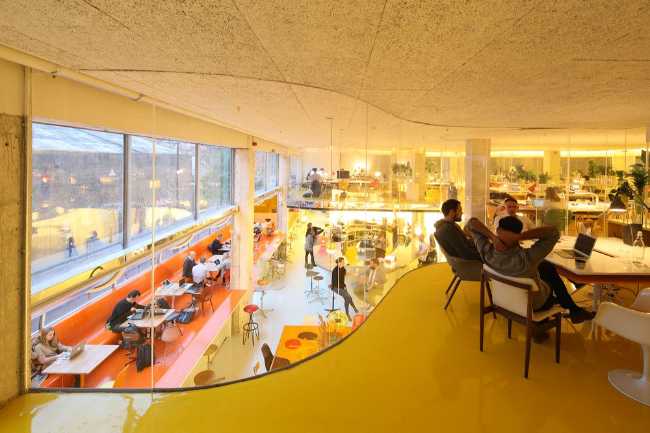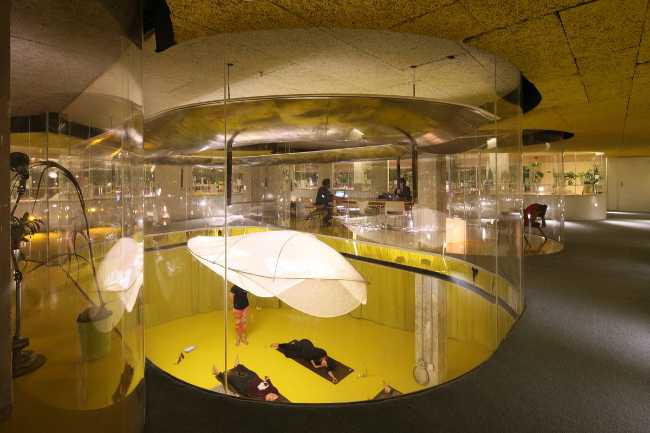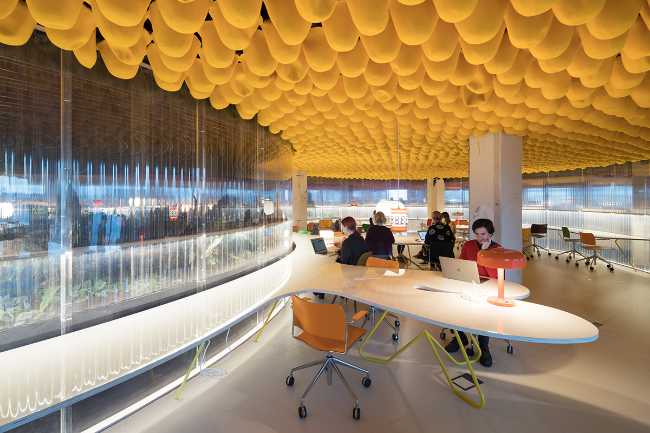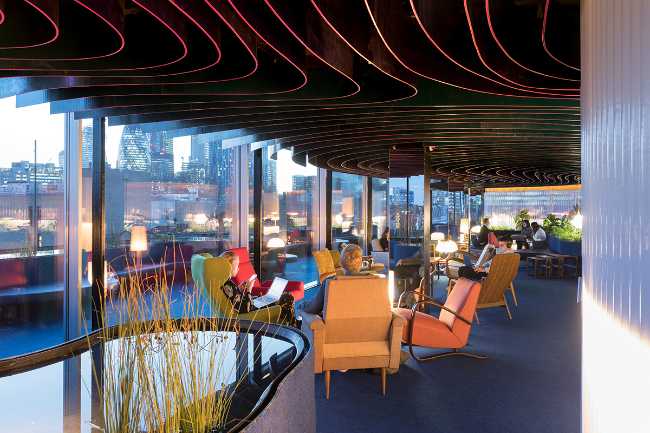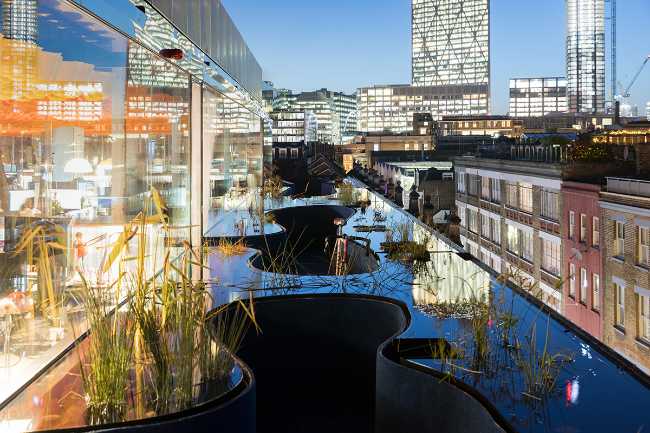The spaces have many dimensional options, ranging from a single workspace, which can accommodate 5, 7, 10 people up to a maximum of 20, plus a large common area that covers a very important aspect of the program due to its accessibility to all users. There are seven meeting rooms, various rest areas for reading or chatting, a large café/bar, with free coffee and meals for lunch for £5 and a large mixed work events area where the large work table can be carried out of the room for any type of activity, from morning yoga sessions to evening concerts, parties, etc.
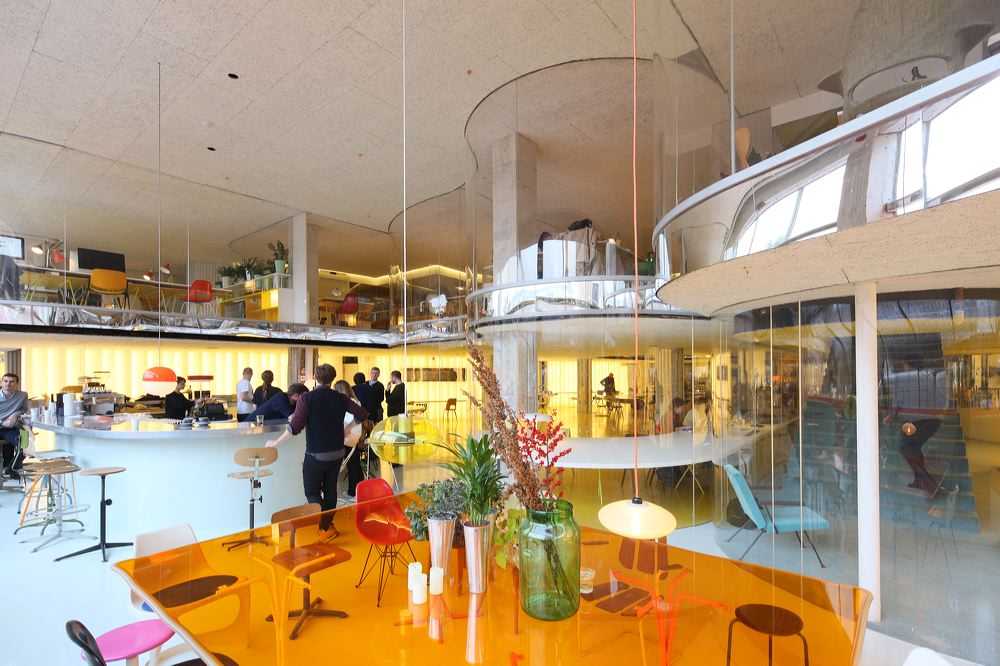
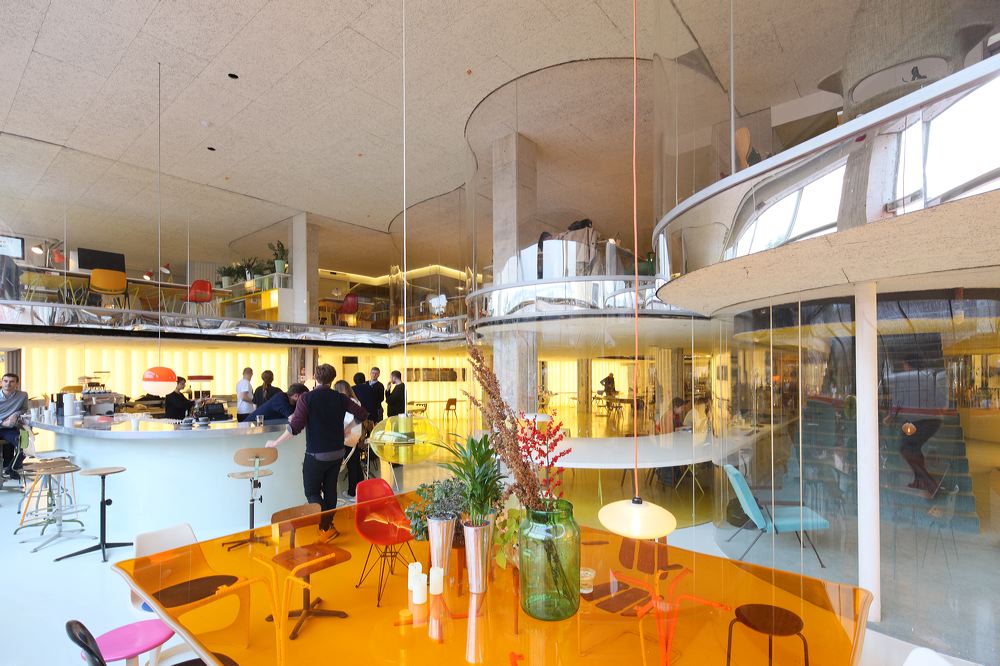
Co-Working in London between offices and open-space. A mixed space for small businesses
Second Home, designed by SelgasCano is located in the East End, London. It is a co-working space with the concept of "alternation" for thirty foreign companies, all of them small scale and linked to technology: the studios have many rental possibilities and a large common area
- #United Kingdom
- #Europe
- #Offices
- #Glass
- #New construction
- #Finishes
- #Architectures
- #Architecture
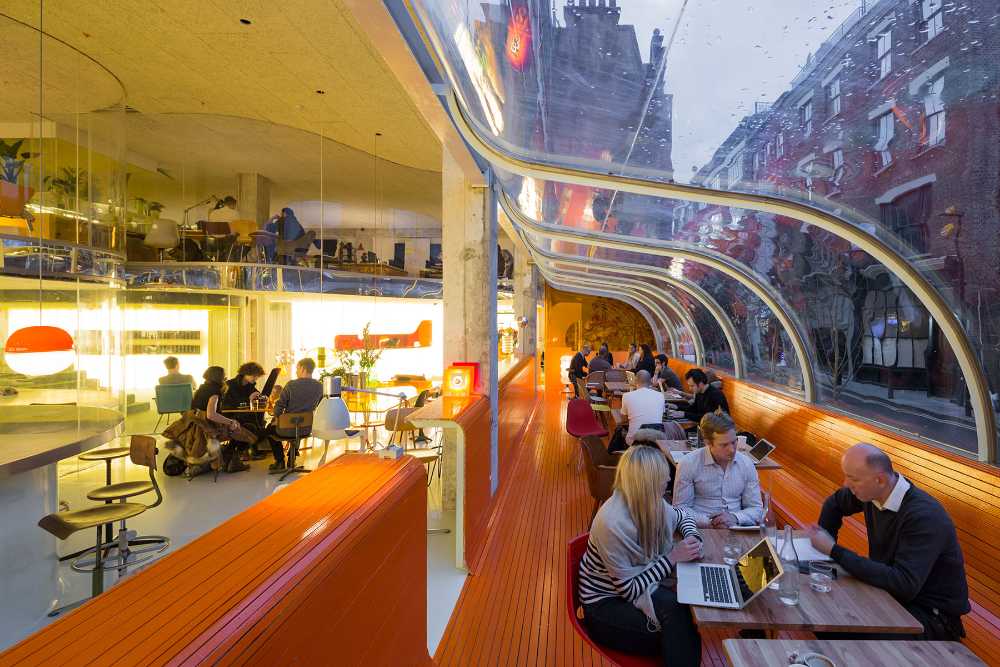
The inherent concept of Second Home was to fill every corner and every area with small, illuminated workspaces while ensuring access to each of these different areas arranged along the edges: every space, every corner is a place of work or a meeting place. On one hand, the maximized use of space fulfils the function of the project and on the other hand, the high density caused by this complete occupancy and the use of space to the limits raises questions about how it will really work in the future, with so many people working together in such a tight space
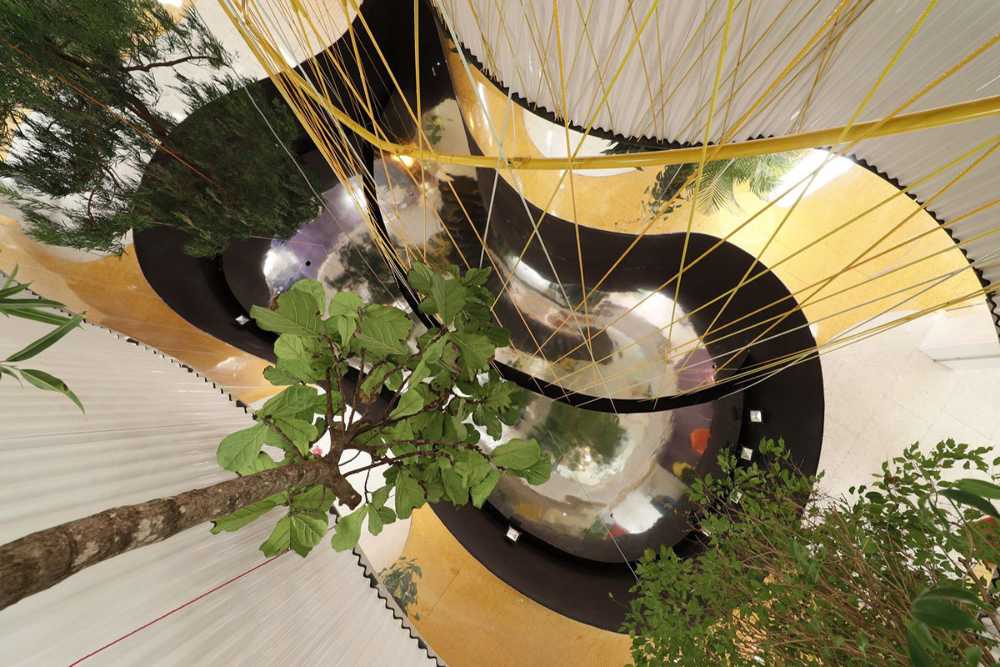
The labyrinth effect typical of offices, which could generate complex situations, has therefore been eliminated, thanks to two tricks: firstly, with a constant visual and physical fluidity that prevents users from feeling lost or stuck in a particular place and secondly, with total control over the acoustics with the help of absorbent carpets and ceilings. This was also made possible by the Celenit AB insulation panels, made of thin spruce wool, which was mineralized and bonded with cement used in the false ceiling, which produced a continuous and curved shape that disperses sound and sight in every direction
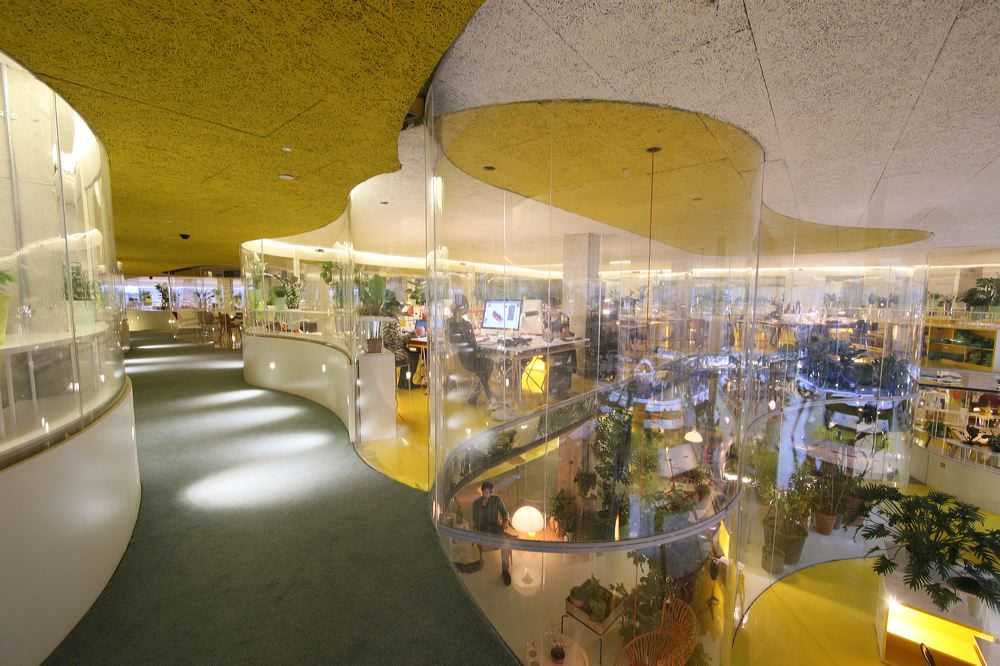
The use of this continuity, as an antidote to density, also achieves "collateral" effects that increase the capacity of space, transforming it into a single entity and making it appear larger and more infinite than it really is. Therefore, it seems that architecture becomes diffused in a familiar environment, transforming the office into a home
